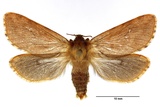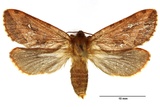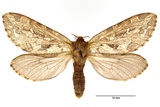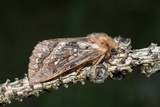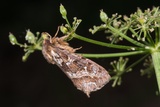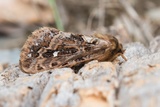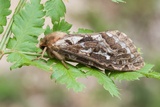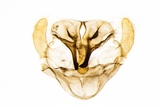Korscheltellus fusconebulosa (De Geer, 1778) Species
Last modified: June 20, 2025, 8:47 p.m.
This very rare species has been discovered for the first time in Belgium in 2017 in the easternmost part of the country (LG), where it has a stable population.
Details
- Classification
- Family: Hepialidae > Genus: Korscheltellus > Species: Korscheltellus fusconebulosa
- Vernacular names
- Gemarmerde wortelboorder (NL), Map-winged swift (EN), Marbrure nébuleuse (FR), Adlerfarn-Wurzelbohrer (DE)
- First mention in Belgium
- Steeman C. & Sierens T. 2018. Interessante waarnemingen van Lepidoptera in België in 2017 (Lepidoptera). — Phegea 46(2): 31–47. On page 40 (as Pharmacis nebulosa). view page
- Status
-
Native
Distribution
Imago
In this species, having a wingspan of 30–38 mm, male and female have a similar wing drawing with a characteristic marble-like pattern. This species can easily be distinguished from the other Hepialidae species by the chequered fore- and hindwing fringes. The antennae are strikingly short and the moths lack functioning mouth parts so they cannot feed.
Caterpillar
The caterpillar is yellowish white, has a reddish-brown head and orange-brown thoracic plates. The lateral sides carry distinctive blackish stigmata.
Bionomics
The larva feeds on the roots of its hostplant, hibernates twice and pupates in the ground. The adults are active from dusk onwards and, later on, come to light.
Flight periods
The adults fly from late May till the beginning of July.
Observed on
- Host plant (species):
- Pteridium aquilinum
- Substrates:
- Ferns and Grasses
The larva feeds mainly in Pteridium aquilinum but sometimes also other food plants are taken. Also Festuca rubra is mentioned in literature.
Habitat
This species prefers open woodland, rough pastures, moorland and heathland.
